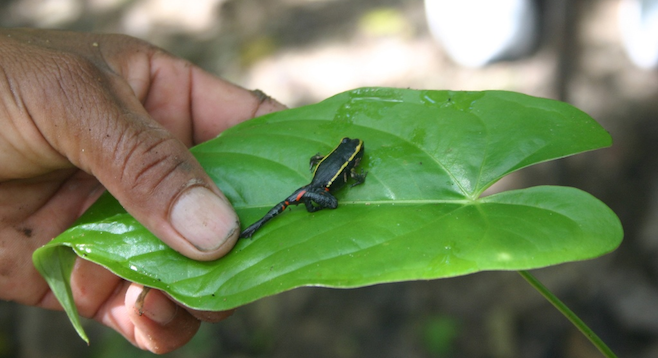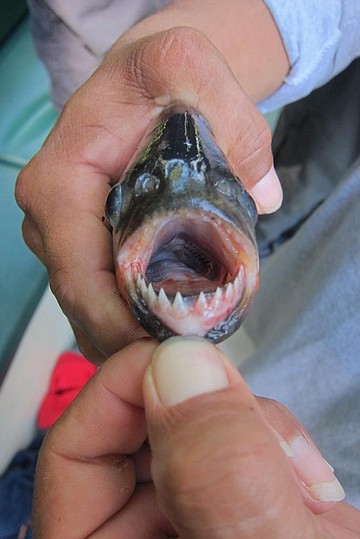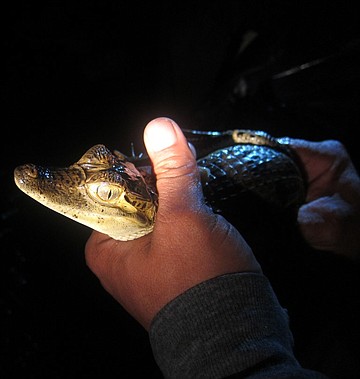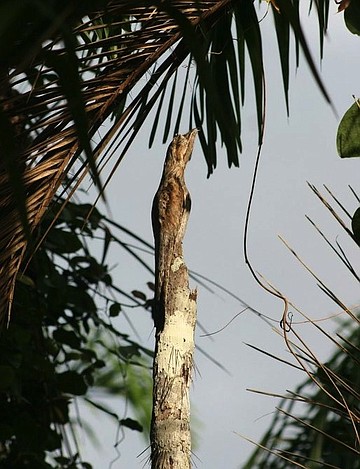 Facebook
Facebook
 X
X
 Instagram
Instagram
 TikTok
TikTok
 Youtube
Youtube

My wife and I were deep in the Amazonian rainforest of northern Peru, traveling on a small river boat.

Our local guide, Uciel, was born and raised in this tropical jungle, and his passion for all living things was contagious. Not only did he know every plant, insect, amphibian and bird, but he related information about them in such a way as to make me feel I was listening to a magical tale from a gifted storyteller.
He presented his knowledge in folklore that connected the modern world we'd come from with the mystical spiritual realm he knew as home – and in such a beautiful way that I gained not only insight, but a deep new respect for the way the people of the jungle have merged these worlds. Surrounded by such unparalleled beauty, it was impossible not to feel the hand of higher intelligence all around us. It was a pure gift to visit this realm basically untouched by man.

Each day we explored tributaries by small skiff that rewarded us with sightings of exotic creatures. Sloths and boas inched their way through the towering canopy over our heads at glacial speed while curious caimans and manatees poked their snouts above the water to acknowledge our passing. We saw frogs the size of a penny (top) whose toxic skin could kill a full grown man and parrots that danced back and forth to an internal tango beat whenever lighted on a branch.
The infinite living variations that make up the remote jungle are a masterpiece of divine architecture, an endless procession of twisting, swirling life, lunging for the sun through the dense canopy, while a round-the-clock symphony of exotic sounds fills the air finer than any orchestra.
Uciel’s ability to spot impossibly small living creatures baffled our imagination. He would point into the foliage and announce where a marmoset monkey no larger than my palm was sitting in a tree, or call our attention to a flight of miniature bats, each the size of a fingernail, clinging to the side of a palm, invisible to me from ten feet away until they flew away en masse.
So when he excitedly pointed at the dead tree trunk pushing up out of the water, we had no reason to doubt him.
We slowed the boat, and he raised his finger to his lips to signal silence as we glided up to within ten feet of what appeared to be nothing more than an old log the currents had suspended on end near a pond of giant water lilies. But his excitement implied much more. This, he whispered, was one of the rarest birds in the Amazon, the Potoo, a nocturnal hunter known for its mournful cry under a full moon. Hard as we both looked, we could see nothing but a rotting log.
I stared at it for several minutes, willing a bird to appear, but was unable to see anything except for its jagged end as Uciel related a beautiful story of how the first Potoo lost its mate and spent the rest of its life searching for her, which is why to this day all Potoos cry at the full moon for their ancestor’s loss. He gazed at the log with an enigmatic smile, in communion with a creature I was not sure existed. This was the most excited we had seen him, and he insisted we were very fortunate to see this rare creature that he himself had only seen a handful of times in his life.

I took a photograph and we continued on our way, thinking the tall tale he had just related was still a fine story and even the best of us are allowed to exaggerate now and then.
A week later as I sat at my computer editing photos, there was the log. I zoomed it to 100% and saw the tip of a feathery tale. Mousing my way further up, I caught the curve of a wing and the articulation of individual feathers. Finally, the jagged top became a beak thrust skyward and I saw a tiny black slit with the gleam of sunlight on the eye of this magnificent creature that until now had been, in my mind, only a folk tale. The Potoo has such perfect camouflage I could not detect it from a body length away.
So now I have a perfect photo of a Potoo bird, and more importantly, I've learned to trust in those who know more than I do – especially when perception does not seem to equal reality.


My wife and I were deep in the Amazonian rainforest of northern Peru, traveling on a small river boat.

Our local guide, Uciel, was born and raised in this tropical jungle, and his passion for all living things was contagious. Not only did he know every plant, insect, amphibian and bird, but he related information about them in such a way as to make me feel I was listening to a magical tale from a gifted storyteller.
He presented his knowledge in folklore that connected the modern world we'd come from with the mystical spiritual realm he knew as home – and in such a beautiful way that I gained not only insight, but a deep new respect for the way the people of the jungle have merged these worlds. Surrounded by such unparalleled beauty, it was impossible not to feel the hand of higher intelligence all around us. It was a pure gift to visit this realm basically untouched by man.

Each day we explored tributaries by small skiff that rewarded us with sightings of exotic creatures. Sloths and boas inched their way through the towering canopy over our heads at glacial speed while curious caimans and manatees poked their snouts above the water to acknowledge our passing. We saw frogs the size of a penny (top) whose toxic skin could kill a full grown man and parrots that danced back and forth to an internal tango beat whenever lighted on a branch.
The infinite living variations that make up the remote jungle are a masterpiece of divine architecture, an endless procession of twisting, swirling life, lunging for the sun through the dense canopy, while a round-the-clock symphony of exotic sounds fills the air finer than any orchestra.
Uciel’s ability to spot impossibly small living creatures baffled our imagination. He would point into the foliage and announce where a marmoset monkey no larger than my palm was sitting in a tree, or call our attention to a flight of miniature bats, each the size of a fingernail, clinging to the side of a palm, invisible to me from ten feet away until they flew away en masse.
So when he excitedly pointed at the dead tree trunk pushing up out of the water, we had no reason to doubt him.
We slowed the boat, and he raised his finger to his lips to signal silence as we glided up to within ten feet of what appeared to be nothing more than an old log the currents had suspended on end near a pond of giant water lilies. But his excitement implied much more. This, he whispered, was one of the rarest birds in the Amazon, the Potoo, a nocturnal hunter known for its mournful cry under a full moon. Hard as we both looked, we could see nothing but a rotting log.
I stared at it for several minutes, willing a bird to appear, but was unable to see anything except for its jagged end as Uciel related a beautiful story of how the first Potoo lost its mate and spent the rest of its life searching for her, which is why to this day all Potoos cry at the full moon for their ancestor’s loss. He gazed at the log with an enigmatic smile, in communion with a creature I was not sure existed. This was the most excited we had seen him, and he insisted we were very fortunate to see this rare creature that he himself had only seen a handful of times in his life.

I took a photograph and we continued on our way, thinking the tall tale he had just related was still a fine story and even the best of us are allowed to exaggerate now and then.
A week later as I sat at my computer editing photos, there was the log. I zoomed it to 100% and saw the tip of a feathery tale. Mousing my way further up, I caught the curve of a wing and the articulation of individual feathers. Finally, the jagged top became a beak thrust skyward and I saw a tiny black slit with the gleam of sunlight on the eye of this magnificent creature that until now had been, in my mind, only a folk tale. The Potoo has such perfect camouflage I could not detect it from a body length away.
So now I have a perfect photo of a Potoo bird, and more importantly, I've learned to trust in those who know more than I do – especially when perception does not seem to equal reality.
Comments